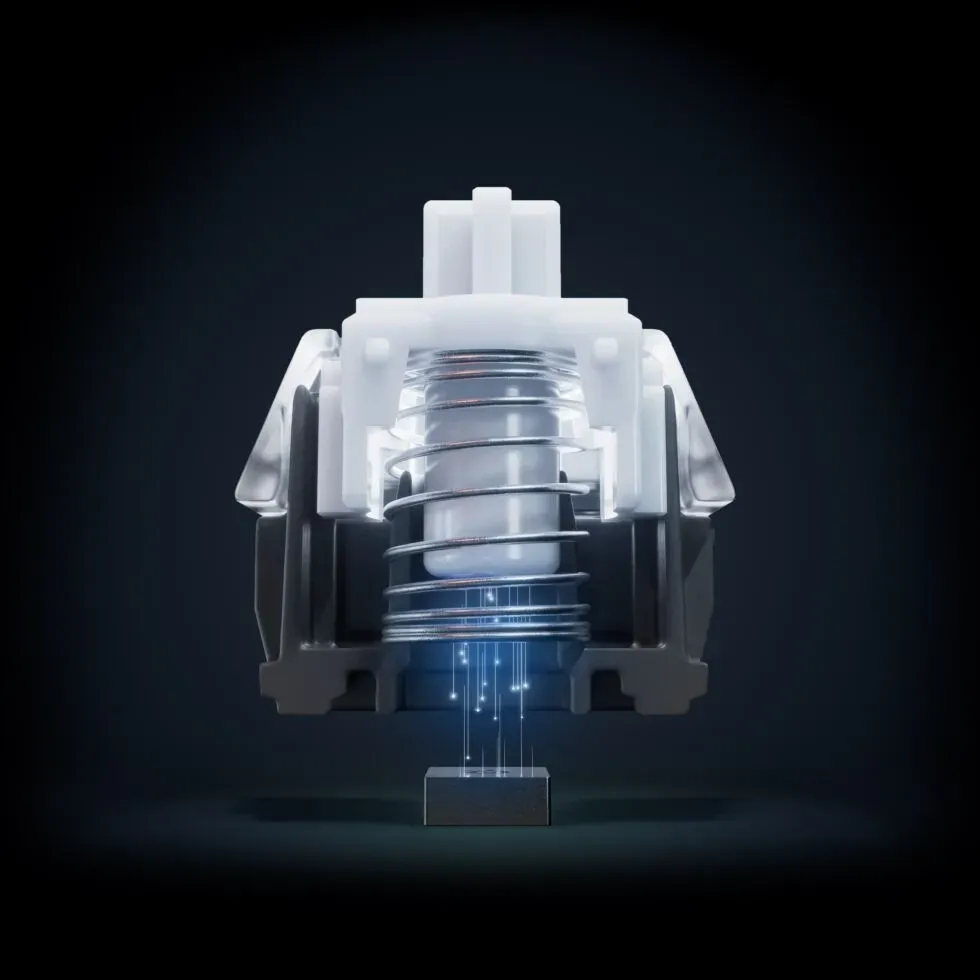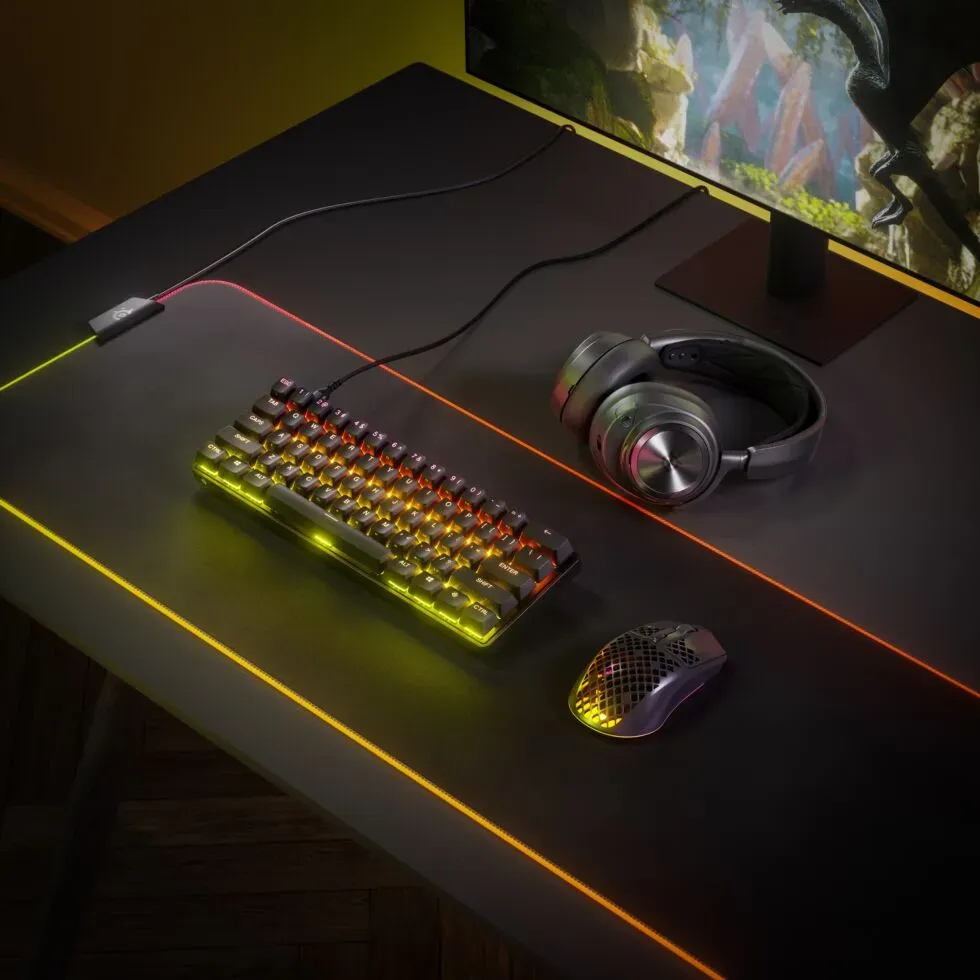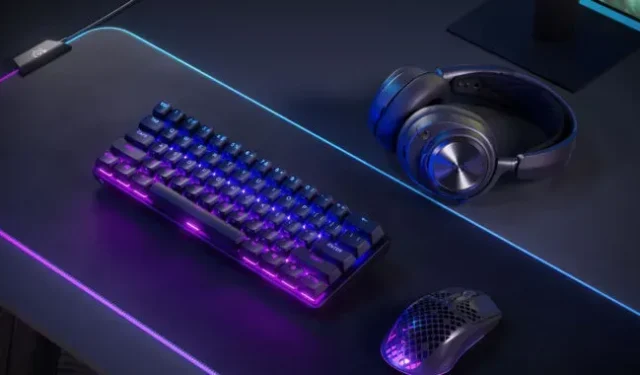Adjustable mechanical switches are an easy way to adjust the sensitivity of various keys on your keyboard. These switches allow you to choose their actuation point, or how far you have to press a key before it registers input, for sensitivity that you can vary depending on which key you’re pressing, or even the application you’re using.
Peripheral manufacturer SteelSeries today announced new wireless and wired mechanical keyboards with mechanical switches that let you adjust the actuation point of each key. The compact SteelSeries Apex Pro Mini Wireless and Apex Pro Mini also let you program the keys so that a key press registers two inputs if you press the key far enough.
Adjustable mechanical switches
SteelSeries first began selling their adjustable OmniPoint mechanical switches in their SteelSeries Apex Pro keyboard in 2019. Debuted on the Apex Pro Mini Wireless and Apex Pro Mini 60% keyboards released today, OmniPoint 2.0 switches are even more adjustable.

The new switches are linear (see our guide to mechanical keyboards if you get lost) with a total travel of 3.8mm. In the meantime, the trigger point is up to you. You can set it between 0.2mm and 3.8mm in 0.1mm increments.
This is a much wider range than the Razer Huntsman Mini Analog (1.5-3.6mm), but noticeably shorter than the range of the Gateron X Lekker switches used in the latest Wooting keyboards (0.1-4.0mm). Switches in Razer and Wooting keyboards also support analog or joystick input in a small number of PC games that support it.
PC-focused brand SteelSeries suggested using this feature to customize your gameplay, such as setting a higher trigger point for “deep throws”and a lower one for “light touches.”
I personally prefer a stiffer spacebar, and while keyboards with higher actuation points or hot-swap mechanical switches are available, something like the Apex Pro Mini keyboards does the same, allowing me to easily change my mind as well as customize the feel of numerous keys., not just the spacebar.
One click, multiple inputs

SteelSeries uses a feature found in adjustable switch keyboards from competitors, including Razer and Wooting: mechanical switches that can take two inputs with a single keystroke.
For example, you can program it so that pressing “A”will enter “A”if you press the key down 0.5mm, and then “B”(or whatever) if you keep pressing the same key for more by 0.5 mm.
The SteelSeries announcement pointed to play combinations such as walking and running or pulling a grenade and then quickly throwing it as possible use cases. Once I got used to the smooth running of this feature, I found the feature to be useful in games where time is of the essence. But creative power users can also use this feature to quickly enter data outside of the battlefield.
Unfortunately, SteelSeries is currently limiting its so-called dual action feature to these new keyboards, and due to the lack of a numeric keypad, nutcrackers are not suitable for all users.
How do they work
OmniPoint 2.0 switches work just like their predecessors, using magnets and the Hall effect.
Typical mechanical switches operate when two pieces of metal touch. Each press of the OmniPoint 2.0 switch sends a magnet down the switch shaft, bringing it closer to the Hall effect sensor at the base. Using magnetic fields, the keyboard reads the distance between the magnet and the sensor to determine how far a key has been pressed and register an input (or two) when needed.
Since there is no physical contact between the parts, the OmniPoint series switches can last longer than conventional mechanical switches. Cherry MX Red linear switches and OmniPoint switches are rated for 100 million clicks each. However, there are some traditional mechanical switches with lower ratings, such as Cherry MX Silent Red (50 million keystrokes).
SteelSeries claims that if you set the switches to the lowest actuation point of 0.2mm, the switches will have a response time of just 0.54ms. One way SteelSeries says the OmniPoint keyboard improves speed is by placing the analog-to-digital converter directly on the keyboard’s main chip, rather than on the switches, and scanning each key every 700 millionths of a second.
Prices
The Apex Pro Mini Wireless retails for a suggested retail price of $240. The Apex Pro Mini costs $180, making it slightly cheaper than the $200 MSRP for its full-size Apex Pro counterpart.
The keyboards face direct competition from the Razer Huntsman Mini Analog, which has a $150 MSRP, and the upcoming Wooting 60HE ($175).
And for those who prefer a numeric keypad, check out the Razer Huntsman V2 Analog ($250) and Wooting Two HE ($195) , which also support two-step triggering.


